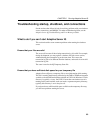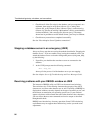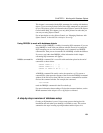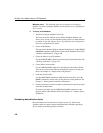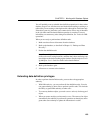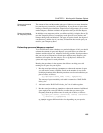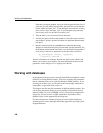
CHAPTER 3 Working with Database Objects
101
This chapter is concerned with the SQL statements for working with database
objects. If you are using Sybase Central, these SQL statements are generated
for you. The primary source of information about Sybase Central is the Sybase
Central online Help. This chapter gives only brief pointers for tasks that you
can carry out using Sybase Central.
For an introduction to using Sybase Central, see “Managing Databases with
Sybase Central” in Introduction to Adaptive Server IQ.
Using DBISQL to work with database objects
Interactive SQL (DBISQL) is a utility for entering SQL statements. If you are
using DBISQL to work with your database schema, instead of executing the
SQL statements one at a time, build up the set of commands in a DBISQL
command file. Then you can execute this file in DBISQL to build the database.
If you use a tool other than DBISQL, all the information in this chapter
concerning SQL statements still applies.
DBISQL command file
A DBISQL command file is a text file with semicolons placed at the end of
commands as shown below.
CREATE TABLE t1 ( .. );
CREATE TABLE t2 ( .. );
CREATE LF INDEX i2 ON t2 ( .. );
..
A DBISQL command file usually carries the extension .sql. To execute a
command file, either paste the contents of the file into the DBISQL command
window (if the file has less than 500 lines) or enter a command that reads the
file into the command window. For example, the command:
read makedb
reads the DBISQL commands in the file makedb.sql.
For more information about reading a file into the command window, see the
READ statement in the Adaptive Server IQ Reference Manual.
A step-by-step overview of database setup
Creating an IQ database is part of a larger setup process that begins with
installation and ends when your database is available to users. This section
summarizes the steps in setting up an IQ database and the objects in it.



